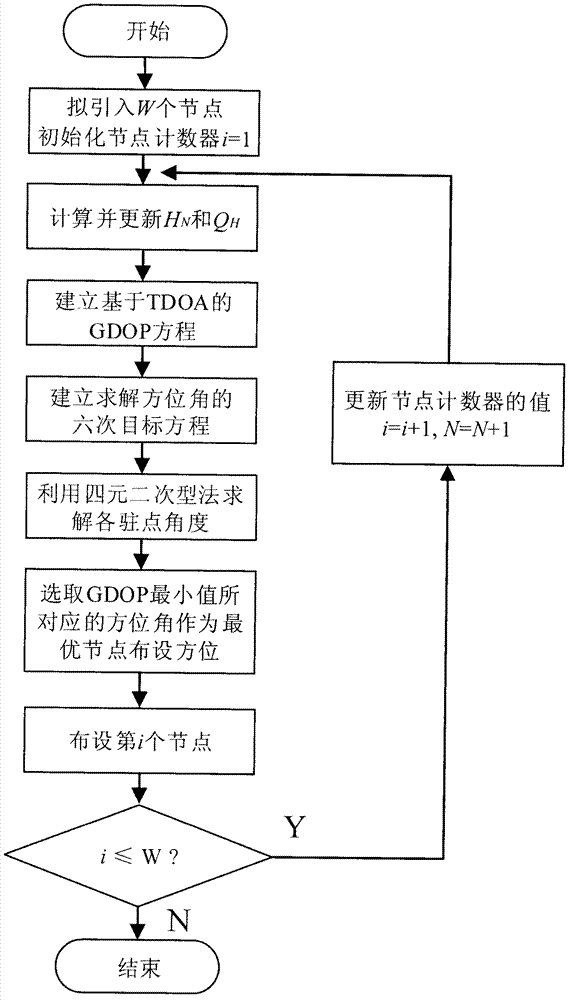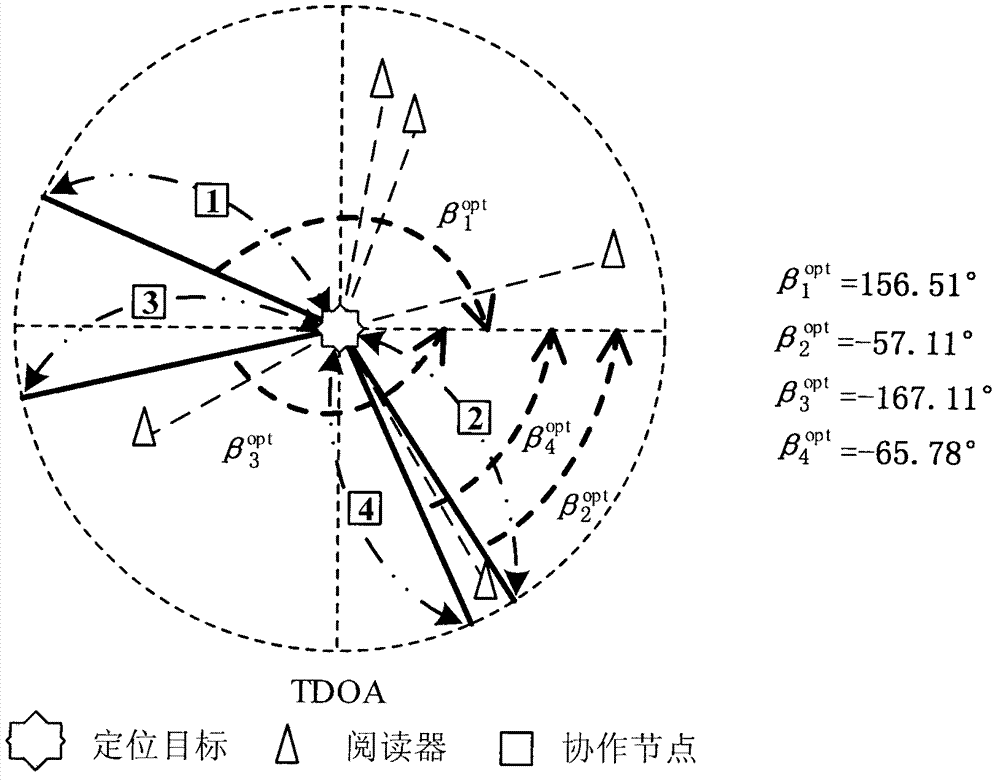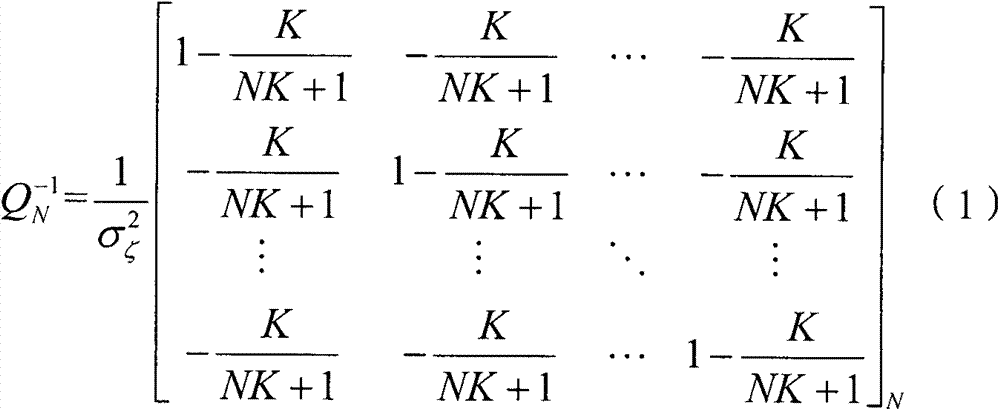Two-dimensional TDOA cooperative node deployment method based on radio frequency identification technology
A radio frequency identification technology and a technology of cooperative nodes, which are applied in the field of two-dimensional TDOA cooperative node deployment, can solve problems such as being in the initial stage
- Summary
- Abstract
- Description
- Claims
- Application Information
AI Technical Summary
Problems solved by technology
Method used
Image
Examples
Embodiment Construction
[0027] The gist of the present invention is to propose a radio frequency identification technology-based method for deploying cooperative nodes in a two-dimensional positioning environment. The method uses the TDOA positioning mechanism to quickly and accurately obtain the optimal deployment method and deployment position of multiple cooperative nodes. , effectively reducing the GDOP value of the label to be located and improving the positioning accuracy of the system.
[0028] Attached below figure 1 Embodiments of the present invention are further described in detail.
[0029] Firstly, the application scenario of the present invention is set. The two-dimensional TDOA-based radio frequency identification positioning system plans to introduce W cooperative nodes, and adopts a step-by-step deployment method to deploy cooperative nodes one by one. The first cooperative node introduced is defined as the first cooperative node, and the other cooperative nodes are defined as non-f...
PUM
 Login to View More
Login to View More Abstract
Description
Claims
Application Information
 Login to View More
Login to View More - R&D
- Intellectual Property
- Life Sciences
- Materials
- Tech Scout
- Unparalleled Data Quality
- Higher Quality Content
- 60% Fewer Hallucinations
Browse by: Latest US Patents, China's latest patents, Technical Efficacy Thesaurus, Application Domain, Technology Topic, Popular Technical Reports.
© 2025 PatSnap. All rights reserved.Legal|Privacy policy|Modern Slavery Act Transparency Statement|Sitemap|About US| Contact US: help@patsnap.com



